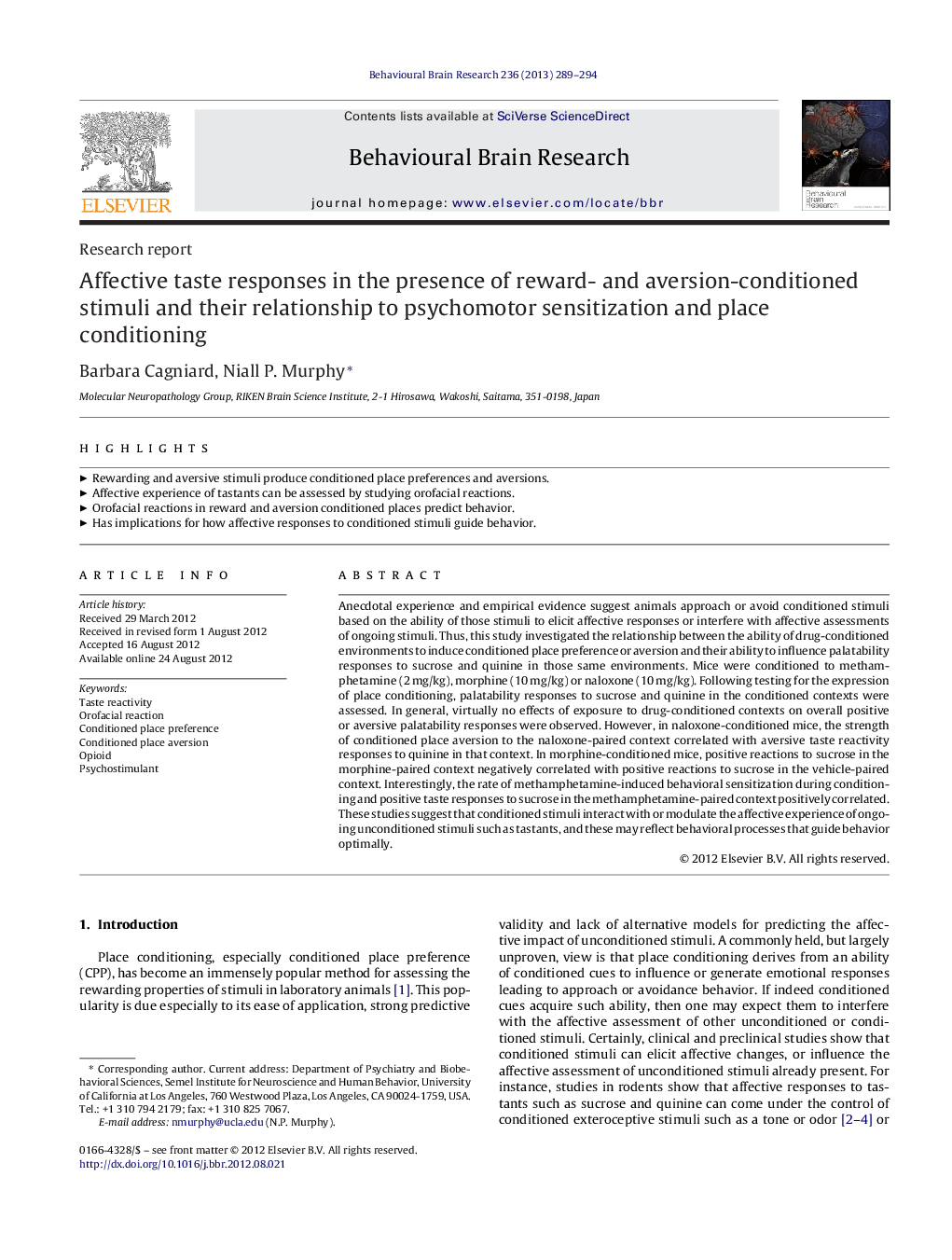| کد مقاله | کد نشریه | سال انتشار | مقاله انگلیسی | نسخه تمام متن |
|---|---|---|---|---|
| 6259496 | 1612996 | 2013 | 6 صفحه PDF | دانلود رایگان |
Anecdotal experience and empirical evidence suggest animals approach or avoid conditioned stimuli based on the ability of those stimuli to elicit affective responses or interfere with affective assessments of ongoing stimuli. Thus, this study investigated the relationship between the ability of drug-conditioned environments to induce conditioned place preference or aversion and their ability to influence palatability responses to sucrose and quinine in those same environments. Mice were conditioned to methamphetamine (2Â mg/kg), morphine (10Â mg/kg) or naloxone (10Â mg/kg). Following testing for the expression of place conditioning, palatability responses to sucrose and quinine in the conditioned contexts were assessed. In general, virtually no effects of exposure to drug-conditioned contexts on overall positive or aversive palatability responses were observed. However, in naloxone-conditioned mice, the strength of conditioned place aversion to the naloxone-paired context correlated with aversive taste reactivity responses to quinine in that context. In morphine-conditioned mice, positive reactions to sucrose in the morphine-paired context negatively correlated with positive reactions to sucrose in the vehicle-paired context. Interestingly, the rate of methamphetamine-induced behavioral sensitization during conditioning and positive taste responses to sucrose in the methamphetamine-paired context positively correlated. These studies suggest that conditioned stimuli interact with or modulate the affective experience of ongoing unconditioned stimuli such as tastants, and these may reflect behavioral processes that guide behavior optimally.
⺠Rewarding and aversive stimuli produce conditioned place preferences and aversions. ⺠Affective experience of tastants can be assessed by studying orofacial reactions. ⺠Orofacial reactions in reward and aversion conditioned places predict behavior. ⺠Has implications for how affective responses to conditioned stimuli guide behavior.
Journal: Behavioural Brain Research - Volume 236, 1 January 2013, Pages 289-294
